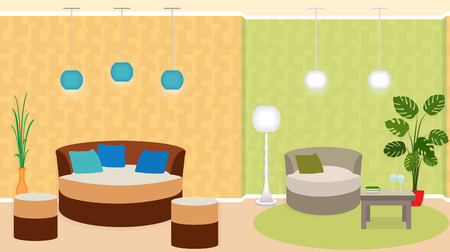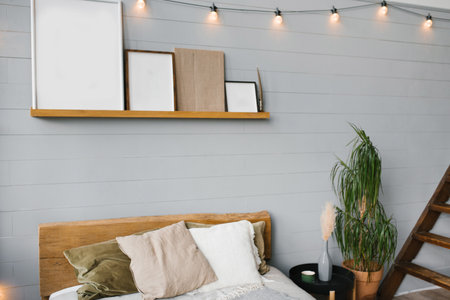Understanding the Challenges of Small UK Bedrooms
British homes, both old and new, often present unique challenges when it comes to bedroom size and layout. Typical bedroom dimensions in the UK tend to be more compact compared to those found in many other countries, with single bedrooms frequently measuring just 6 by 8 feet (1.8 by 2.4 metres) and doubles rarely exceeding 10 by 12 feet (3 by 3.6 metres). This is especially true in period properties, where architectural quirks such as chimney breasts, sloping ceilings, and alcoves can further restrict usable space. Meanwhile, modern new-builds are designed with efficiency in mind, sometimes sacrificing generous bedroom proportions in favour of open-plan living areas elsewhere in the home. These spatial constraints demand creative solutions for maximising every inch of available room while maintaining comfort and functionality—a challenge familiar to many UK homeowners.
Smart Furniture Choices for Compact Spaces
Making the most of a small bedroom in a UK home begins with selecting the right furniture. With limited floor space, every piece must serve a purpose—ideally, more than one. Multifunctional furniture is key to maximising both storage and comfort without crowding the room. Here are some clever options tailored for British homes where bedroom sizes can often be compact.
Ottoman Beds: Storage Meets Comfort
Ottoman beds are a popular choice across the UK, thanks to their built-in storage hidden beneath the mattress. They are perfect for stowing away bedding, out-of-season clothes or even suitcases. This solution keeps your belongings out of sight yet easily accessible, making it ideal for box rooms or period properties with minimal cupboard space.
Wall-Mounted Storage Solutions
To free up valuable floor space, consider wall-mounted shelves and cabinets. These can be installed above headboards or along unused walls, providing storage for books, decorative items, or daily essentials. Floating bedside tables also offer surface area without occupying extra room, helping to maintain an open and tidy feel.
Built-In Wardrobes: Tailored to Your Space
Unlike freestanding wardrobes that can dominate a small room, built-in wardrobes are designed to fit seamlessly into alcoves or awkward corners—a common feature in many UK homes. They make use of vertical space and can be customised with internal organisers such as drawers, hanging rails and shoe racks to maximise their efficiency.
Comparison Table: Smart Furniture Options for Small Bedrooms
| Furniture Type | Main Benefit | Best For |
|---|---|---|
| Ottoman Bed | Hidden under-bed storage | Storing bulky items; maximising floor area |
| Wall-Mounted Storage | Saves floor space; flexible placement | Books, decor, everyday essentials |
| Built-In Wardrobe | Bespoke fit; optimises awkward spaces | Clothes, shoes, accessories organisation |
Selecting smart, multifunctional furniture ensures that every square foot works harder in your bedroom—creating a comfortable sanctuary even within the typical constraints of UK house sizes.

3. Innovative Storage Solutions
Making the most of a small bedroom in a UK home often comes down to clever storage choices that reduce clutter while maintaining precious floor space. One creative approach is to utilise alcoves, which are frequently found in period properties across the country. These recesses can be fitted with bespoke shelving or built-in cupboards, transforming awkward nooks into practical spots for books, decor, or even concealed wardrobes.
Under-bed storage is another highly effective strategy for British bedrooms where square footage is at a premium. Opt for beds with integrated drawers or invest in sturdy storage boxes that slide neatly beneath the frame. This solution is ideal for stashing away out-of-season clothing, spare bedding, or shoes, all while keeping your bedroom looking tidy and spacious.
Fitted shelving offers yet another avenue for maximising storage without crowding the room. Tailored shelving units can be installed above headboards, around windows, or even running along one wall, creating vertical storage that draws the eye upward and frees up valuable floor area. Consider open shelves for displaying personal touches or closed cabinets to keep everyday items tucked out of sight.
By integrating these innovative storage solutions—whether making use of alcoves, going under-bed, or installing fitted shelving—you can transform even the cosiest of UK bedrooms into an organised and welcoming retreat without sacrificing style or comfort.
4. Optimising Layout and Flow
Making the most of limited space in a UK bedroom often comes down to how well you arrange your furniture. With typical British homes featuring compact bedrooms—think Victorian terraces, post-war semis, or new-build flats—clever positioning can significantly improve both movement and functionality.
Practical Tips for Arranging Furniture
- Prioritise Essentials: Start with the bed as the centrepiece. In smaller rooms, opt for a double or small double and position it against the longest wall, ideally away from doors and windows to maintain natural flow.
- Floating Furniture: Where possible, choose pieces that stand on legs rather than blocky bases. This exposes more floor area and creates a sense of space.
- Dual-Purpose Solutions: Make use of storage beds, wall-mounted shelves, or ottoman benches at the foot of the bed to reduce clutter and free up floor space.
- Clear Pathways: Always allow at least 60cm clearance around the bed for easy access—especially important in narrow UK bedrooms with chimney breasts or alcoves.
Common UK Bedroom Layouts and Arrangement Strategies
| Bedroom Type | Typical Features | Arrangement Strategy |
|---|---|---|
| Victorian Terrace | Narrow room, chimney breast, alcoves | Fit wardrobes into alcoves; place bed opposite window; use wall hooks for vertical storage |
| Semi-Detached (Post-War) | Box-shaped, single window, built-in wardrobe | Bed under window or adjacent wall; desk in corner; floating shelves above radiators |
| New-Build Flat | L-shaped, compact footprint, modern finishes | Use sliding doors; position bed in wider section; modular furniture to adapt layout as needed |
Clever Flow Considerations
If your room is particularly small or awkwardly shaped, consider removing bulky bedside tables in favour of wall-mounted alternatives. Keep frequently used items close to hand but off surfaces to maintain tidiness. Finally, make sure doors open fully without obstruction—if not, swap for sliding or folding designs to save precious space.
By following these practical layout tips tailored to common UK bedroom styles, you can maximise every inch and enjoy a comfortable yet uncluttered sleeping environment.
5. Maximising Light and Ambience
When it comes to small bedrooms in UK homes, making the most of natural and artificial light is key to creating an open, inviting atmosphere. The often unpredictable British weather means you’ll want to design your space to feel bright and cheerful, even on gloomy days.
Choose the Right Colour Scheme
Light, neutral colours—such as soft whites, gentle greys, or pastel hues—can help reflect natural light and make a room feel more expansive. Avoid heavy, dark shades that might absorb light and create a closed-in feeling. If you’d like to add some British character, consider subtle touches of heritage colours like sage green or duck egg blue, which work beautifully with period features and modern flats alike.
Strategic Use of Mirrors
Mirrors are one of the most effective tools for visually enlarging a small bedroom. Place a large mirror opposite or adjacent to a window to bounce daylight around the room. In narrow spaces typical of Victorian terraces or new-build flats, mirrored wardrobes or a decorative wall mirror can also enhance the sense of depth and openness.
Layered Lighting Solutions
The UK climate often brings overcast skies, so relying solely on natural light won’t do. Layer your lighting with a combination of ceiling fixtures, bedside lamps, and wall lights to brighten up every corner. Opt for warm white bulbs (around 2700K–3000K) to create a cosy ambience that counters the chill of damp British evenings. Installing dimmer switches allows you to adjust the mood according to the time of day or season—a practical touch for busy households.
Window Treatments for Maximum Daylight
Avoid heavy curtains that block out precious sunlight; instead, choose lightweight fabrics or modern blinds that can be easily drawn back during the day. For privacy without sacrificing brightness, consider sheer voiles—popular in many UK homes—which allow light to filter through while keeping prying eyes at bay.
By carefully combining colour schemes, mirrors, and layered lighting tailored to Britain’s unique climate, you can transform even the smallest bedroom into a bright, airy retreat with plenty of character and comfort.
6. Personal Touches and Maintaining Practicality
Adding a sense of British character to your small bedroom need not come at the expense of functionality. Soft furnishings such as textured throws, tartan or floral cushions, and classic woollen blankets can instantly create a homely atmosphere while also serving practical purposes—think warmth and extra comfort. Incorporate art that resonates with you, whether it’s vintage railway posters, local landscape prints, or minimalist watercolours, to personalise your space without overwhelming it. When choosing décor items, favour those with dual functions; for example, decorative storage baskets made from wicker or felt add both charm and hidden organisation. Opt for wall-mounted shelves to display treasured books or ornaments, keeping precious floor space clear. Remember to select lighting that suits British moods—layered lighting with dimmable lamps can provide both ambience and task illumination as needed. By grounding your choices in everyday practicality while reflecting your personal style, you’ll ensure that even the smallest UK bedroom feels uniquely yours and remains easy to live in day-to-day.

